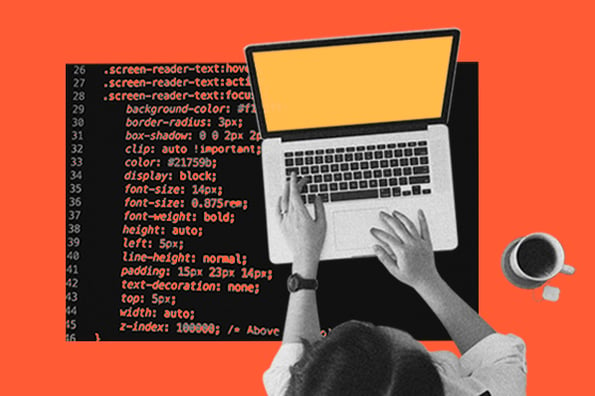Exploring the Relationship Between Web Design and Search Engine Optimization
Exploring the Relationship Between Web Design and Search Engine Optimization
Blog Article
Elevate Your Online Visibility With Spectacular Website Design Tips and Trends
The interaction of visual allure, present design trends, and user experience plays an essential role in achieving this goal. The subtleties of efficient design expand beyond appearances; understanding crucial techniques for optimization can considerably impact your success.
Significance of Visual Allure
In today's digital landscape, the visual allure of a web site is vital; studies show that 94% of impressions are design-related. This fact emphasizes the essential duty that aesthetics play in customer involvement and retention. A well-designed internet site not just brings in site visitors yet additionally encourages them to explore its content additionally. Efficient visual layout encompasses components such as shade systems, design, imagery, and typography, all of which add to a cohesive and appealing individual experience.
Furthermore, a visually appealing internet site infuses a feeling of reliability and professionalism and reliability. Customers are extra likely to rely on a site that looks polished and well-structured, which can substantially impact conversion rates. Conversely, a unpleasant or messy layout can lead to high bounce prices, as customers might regard the web site as untrustworthy or outdated.
Additionally, the appearances of an internet site can communicate brand identity and values (Web design). Constant use branding components, such as logo designs and color schemes, enhances acknowledgment and promotes a much deeper link with the target market. Finally, prioritizing aesthetic appeal is important for producing appealing, credible, and brand-aligned online experiences that resonate with individuals
Current Style Fads
Modern website design is frequently advancing, and remaining updated with current fads is crucial for creating impactful online experiences. One noticeable trend is the surge of minimalism, identified by clean lines, enough white space, and a concentrate on important aspects. This approach not just enhances functionality but additionally permits content to take spotlight.
Furthermore, dark setting user interfaces have obtained popularity, providing customers with an aesthetically striking alternative while minimizing eye strain. This trend aligns well with individual choices, providing a contemporary aesthetic that is both practical and trendy.
One more notable fad is the consolidation of bold typography. Developers are progressively making use of huge, meaningful font styles to develop aesthetic power structure and communicate brand messages efficiently. Combined with vivid shade schemes, this trend adds dynamism to internet pages.

Necessary Style Elements
Reliable web style hinges on several necessary layout aspects that with each other develop a natural and interesting customer experience. The first of these components is format, which determines how content is arranged on the page. A well-structured format not only improves readability however likewise guides individuals through the website flawlessly.
Color plays an essential duty in design, influencing feelings and brand name perception. An unified shade palette can stimulate details sensations and establish a visual power structure, thus attracting interest to crucial elements. In a similar way, typography is vital; the selection of typefaces need to straighten with the brand identity and make certain clarity throughout devices.
Furthermore, whitespace is usually ignored but is crucial for creating equilibrium. It assists prevent mess, permitting users to focus on the important aspects without disturbance.
Finally, uniformity across all style components strengthens brand identity and makes navigation intuitive. By thoroughly including these important design components, internet designers can create practical and aesthetically attractive web sites that mesmerize site visitors and motivate communication.
User Experience Optimization
A smooth customer experience is critical for keeping visitors and driving conversions on a web site. Maximizing individual experience (UX) includes comprehending your target market and customizing style components to satisfy their demands successfully. Key components of UX optimization consist of instinctive navigating, quick loading times, and clear phone calls to activity.
Integrate breadcrumb tracks to aid individuals quickly backtrack, minimizing aggravation. Rate is another vital variable; get redirected here web sites must pack within 3 secs to avoid customers from abandoning the site.
In addition, your website's style need to prioritize clarity. Usage legible typefaces, contrasting shades, and whitespace to create an aesthetically appealing layout that overviews users with content easily. Phone call to activity must be plainly shown, making use of workable language that encourages customers to engage.
Mobile Responsiveness Strategies
Virtually half of all internet traffic now stems from mobile phones, highlighting the significance of applying robust mobile responsiveness techniques. To make sure optimal user experience throughout various display sizes, internet designers have to accept a liquid grid format that adjusts perfectly to various devices. This strategy permits web content to resize and rearrange without compromising functionality or appearances.
Integrating flexible pictures and media queries is necessary. Images should immediately readjust their dimension according to the viewport, while media queries can spot device qualities and use tailored CSS styles accordingly. This strategy improves load times and ensures that customers have an aesthetically appealing experience.
Furthermore, prioritize touch-friendly navigation aspects. Buttons and links should be conveniently tappable, with ample spacing to stop misclicks. Preventing hover-dependent interactions learn the facts here now better enhances functionality on touchscreens.
Finally, carrying out routine screening throughout various tools and internet browsers is vital. Devices like Google's Mobile-Friendly Test can aid recognize areas needing enhancement. By taking on these mobile responsiveness approaches, services can enhance individual involvement, boost online search engine positions, and eventually drive conversions, consequently elevating their on-line presence properly.
Final Thought
By prioritizing aesthetic allure through existing design patterns and necessary components, services can promote trustworthiness and involvement. Maximizing customer experience and ensuring mobile responsiveness are essential for promoting smooth communication throughout devices.

Alternatively, a unsightly or messy style can lead to high bounce prices, as customers might regard the site as unreliable or outdated. - Web design
Efficient company website internet design pivots on a number of necessary layout elements that with each other create a cohesive and engaging customer experience. Optimizing customer experience (UX) includes comprehending your target market and customizing style components to fulfill their demands effectively.
Report this page